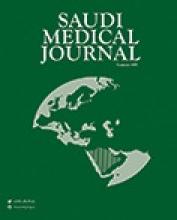Abstract
OBJECTIVE: To determine the relation of glutathione-S transferase-p (GST-p) expression and cisplatin resistance in non small cell lung cancer (NSCLC).
METHODS: This study was carried out on 61 patients who were admitted to Chest Diseases Clinic, Ondokuz Mayis University, Samsun, Turkey, from 1997 to 1999. Twenty-seven NSCLC patients out of 61 lung cancer cases whose biopsy specimens were evaluated for GST-p, received multiagent chemotherapy including cisplatin. The correlations between GST-p expression and age, sex, performance score, histology, stage of the disease and response to chemotherapy were investigated.
RESULTS: There was a significant correlation between GST-p expression and the histological type of the disease (p<0.05). However, no significant relation was found with age, sex, performance score or stage of the disease (p>0.05). Glutathione-S transferase-p staining characteristics of the 27 patients receiving chemotherapy were: less than 10% in 3 patients (11.1%), 10-50% in 9 patients (33.3%) and more than 50% in 15 patients (55.5%). One of the 3 patients (33.3%) with GST-p staining percentage of less than 10%, 3 of 9 patients (33.3%) with staining percentage of 10-50% and 4 out of 15 patients (26.6%) with staining percentage of more than 50% had an objective response to chemotherapy. No significant correlation was found between GST-p expression and response to chemotherapy in the 3 groups (p>0.05).
CONCLUSION: Glutathione-S transferase-p expression might not always predict the response to combination chemotherapy regimens containing cisplatin. Several other mechanisms may play a role in cisplatin-resistance.
- Copyright: © Saudi Medical Journal
This is an open-access article distributed under the terms of the Creative Commons Attribution-Noncommercial-Share Alike 3.0 Unported, which permits unrestricted use, distribution, and reproduction in any medium, provided the original work is properly cited.






